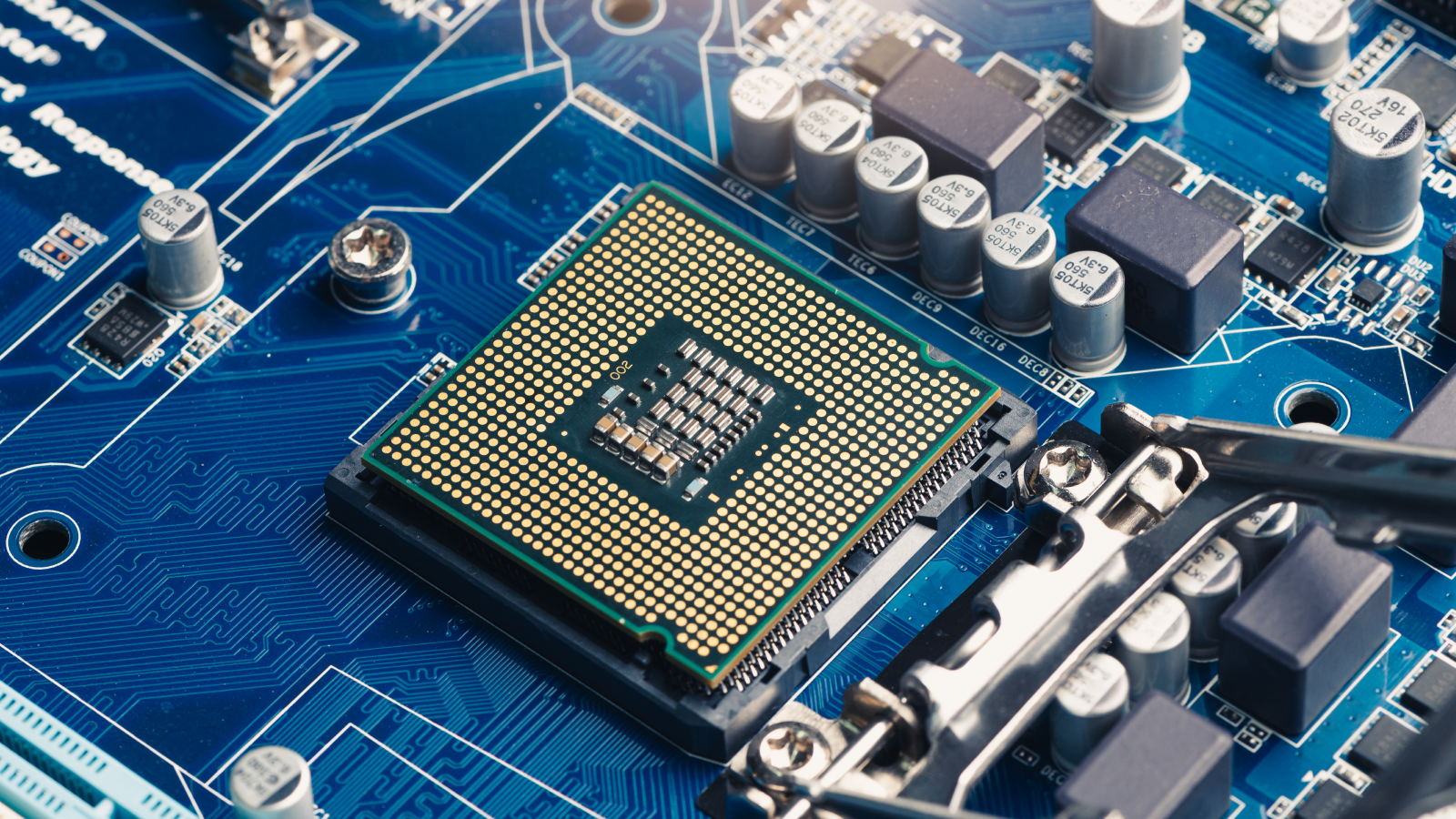“The new device is built from arrays of resistive random-access memory (RRAM) cells… The team was able to combine the speed of analog computation with the accuracy normally associated with digital processing. Crucially, the chip was manufactured using a commercial production process, meaning it could potentially be mass-produced.”
Article is based on this paper: https://www.nature.com/articles/s41928-025-01477-0
It uses 1% of the energy but is still 1000x faster than our current fastest cards? Yea, I’m calling bullshit. It’s either a one off, bullshit, or the next industrial revolution.
EDIT: Also, why do articles insist on using ##x less? You can just say it uses 1% of the energy. It’s so much easier to understand.
I mean it‘s like the 10th time I‘m reading about THE breakthrough in Chinese chip production on Lemmy so lets just say I‘m not holding my breath LoL.
Yeah it’s like reading about North American battery science. Like yeah ok cool, see you in 30 years when you’re maybe production ready
I’m ready for this entire category of “science blog” website to disappear. Mainstream media are bad enough at interpreting movements in science, but these shitty little websites make their entire living off of massively overblowing every little thing. Shame on OP and anyone who posts this kind of garbage.
But it only does 16x16 matrix inversion.
Oh noes, how could that -possibly- scale?
To a billion parameter matrix inverter? Probably not too hard, maybe not at those speeds.
To a GPU, or even just the functions used in GenAI? We don’t even know if those are possible with analog computers to begin with.
@TheBlackLounge @kalkulat LLM inference is definitely theoretically possible on analog chips. They just may not scale :v
https://www.nature.com/articles/s41928-025-01477-0
Here’s the paper published in Nature.
However, it’s worth noting that Nature has had to retract studies before:
https://en.wikipedia.org/wiki/Nature_(journal)#Retractions
From 2000 to 2001, a series of five fraudulent papers by Jan Hendrik Schön was published in Nature. The papers, about semiconductors, were revealed to contain falsified data and other scientific fraud. In 2003, Nature retracted the papers. The Schön scandal was not limited to Nature; other prominent journals, such as Science and Physical Review, also retracted papers by Schön.
Not saying that we shouldn’t trust anything published in scientific journals, but yes, we should wait until more studies that replicate these results exist before jumping to conclusions.
I would imagine there’s a kernel of truth to it. It’s probably correct, but for one rarely used operation, or something like that. It’s not a total revolution. It’s something that could be included to speed up a very particular task. Like GPUs are much better at matrix math than the CPU, so we often have that in addition to the CPU, which can handle all tasks, but isn’t as fast for those particular ones.
coming from china, more like 1 -off bs, with nothing to backup on.
They’re real, but they aren’t general purpose and lack precision. It’s just analog.
It’s a weird damn lie if it is.
And the death of the American economy if it isn’t, fingers crossed.
As someone with a 401k I really hope it isn’t.
The economy crashing won’t hurt billionaires but will kill the middle class.
If anything the economy crashing will allow the 0.1% to buy up anything they haven’t gotten already.
And now you see why they want to crash the economy.
What middle class? 🤔
The one so worried about their 401Ks they won’t risk the ire of the rich.
Yeah this is literally what happened in 2008. Economic instability stopped banks from lending to would be individual home buyers, but corpos bought up everything they could eagerly with a 20% price cut.
Economic instability is generally better for the people who can weather the storm, i.e. those with resources to spare, because (as you say) they can buy assets on the cheap when the less fortunate run out of cash to survive on and have to liquidate.
It’s long periods of stability that seem to let the lower classes build up a little. Yet another reason why war and strife is of benefit to the rich.
For the love of Christ this thumbnail is triggering, lol
Just push ever so slightly more when you hear the crunching sounds.
Then apply thermal paste generously
Pour a bucket of water over it for liquid cooling
Why? It’s standard socket in SMOBO design (sandwich Motherboard).
The CPU is upside down you dork.
Let me guess, you think The Onion is a real newspaper, right?
I mean, in 2025 it’s basically a preview. It’s gone from to satire to prophecy.
1000x!
Is this like medical articles about major cancer discoveries?
1000x yes!
yes, except the bullshit cancer discoveries are always in Israel, and the bullshit chip designs are in china.
Yes. Please remember to downvote this post and all others that are based on overblown articles from nobody science blogs.
Look, It’s one of those articles again. The bi-monthly “China invents earth-shattering technology breakthrough that we never hear about again.”
“1000x faster?” Learn to lie better. Real technological improvements are almost always incremental, like “10-20% faster, bigger, stronger.” Not 1000 freaking times faster. You lie like a child. Or like Trump.
“1000x faster?” Learn to lie better
Analogue computers are indeed capable of doing a task 1000x faster than a regular computer. The difference is they do only that task, in a very specific way, and with one specific type of output. You can 3D print at home an “analogue computer” that can solve calculus equations, it can technically be faster than a CPU, but that’s the only thing it can do, it’s complex, and the output is a drawing on paper.
If you come up with a repeatable and precise set of mechanical movements that are analogous to the problem you want to solve, you can indeed come up with headlines like that.
Because until it hits market, it’s almost meaningless. These journalists do the same shit with drugs in trials or early research.
I agree that before it’s a company selling a product it’s just dreams.
However this is serious research. Skip the journo and open the nature.com link to the scientific article.
For the ones not familiar with nature, it’s a highly regarded scientific magazine. Articles are written by researchers not journalists.
The Nature paper says they’ve done a proof of concept with a few bits, and concluded that they can reproduce it with cutting edge processors. That’s akin to ‘Mice survive cancer longer’ becoming ‘We’ve cured cancer forever’.
They might be right, but I’m not holding my breath.
Oh yeah if this advances fast it may be a product in 5 to 10 years.
AI hype in a nutshell
Here’s a Veritasium video from 3 years ago about an American company making analog chips, explaining why they are so much more efficient in certain tasks. https://youtu.be/GVsUOuSjvcg
It is not an incremental improvement because it’s a radically different approach. This is not like making a new CPU architecture or adding more IPC, it’s doing computation in a whole different way, that is closer to a physical model using springs/gravity/gears/whatever to model something like the Antikythera mechanism or those water-based financial models than any digital computer.
Also, uncritically dismissing anything coming from China as a scam is not being resistant to Chinese propaganda, it’s just falling for the US’.
Yep! It’s a modal difference. Analogous to dismissing SSDs as a replacement for HDDs. HDDs get incrementally better as they improve their density capabilities. SSDs, meanwhile, came along and provided a “1000x” gain in speed. Let me tell folks here: that was MAGICAL. The future had arrived, at tremendous initial cost mind you, but it’s now the mainstream standard.
(Funny thing about HDDs — they’re serving a new niche in modern times. Ultra high densities have unlocked tremendously cheap bulk storage. Need to store an exabyte somewhere? Or need to read some data but don’t mind waiting a couple minutes/hours? SMR drives got ya covered. That’s the backbone of the cloud in 2025 with data storage exploding year over year.)
It can be 1000x faster because it analog. Analog things take very very little time to compute stuff. We don’t generally use them because they are very hard to get the same result twice and updating is also hard
The fun thing is, for LLM you don’t need perfectly repeatable result. It won’t speed up training but running the chips could be significantly cheaper with that kind of tech. Veritasium had a video about it a couple of years back, before the ai craze.
Its funny that most posts including the one our are responding to are fully incoherent by people who not only didn’t read the article but are incapable of doing so
link thanks
" Future Computers Will Be Radically Different (Analog Computing)" - https://www.youtube.com/watch?v=GVsUOuSjvcg
Analog is literally computing on the fabric of the universe.
You mean like all computers
You are dumb.
You have gotten close to understanding something profound and failed to understand that the thing in your hand also represents that profundity.
Dumby.
Computation is arranging the structure of the universe to reflect itself and something not a mind but a necessary component part thereof. All computing is literally computing on the structure of the universe. A well expressed thought to which you shall reply what? “Dumby” not even a word anyone uses. It’s not merely that you are incapable of expressing an alternative position you are not even capable of calling someone stupid correctly.
Why are you so dumby???
This was bound to happen. Neural networks are inherently analog processes, simulating them digitally is massively expensive in terms of hardware and power.
Digital domain is good for exact computation, analog is better for approximate computation, as required by neural networks.
You might benefit from watching Hinton’s lecture; much of it details technical reasons why digital is much much better than analog for intelligent systems
BTW that is the opposite of what he set out to prove He says the facts forced him to change his mind
much of it details technical reasons why digital is much much better than analog for intelligent systems
For current LLMs there would be a massive gain in energy efficiency if analogue computing was used. Much of the current energy costs come from stimulating what effectively analogue processing on digital hardware. There’s a lot lost in the conversation, or “emulation” of analogue.
Thank you for the link, it was very interesting.
Even though analogue neural networks have the drawback that you can’t copy the neuron weights (currently, but tech may evolve to do it), they can still have use cases in lower powered edge devices.
I think we’ll probably end up with hybrid designs, using digital for most parts except the calculations.
For low power neural nets look up “spiking neural networks”
I wish researchers like Hinton would stick to discussing the tech. Anytime he says anything about linguistics or human intelligence he sounds like a CS major smugly raising his hand in Phil 101 to a symphony of collective groans.
Hinton is a good computer scientist (with an infinitesimally narrow window of expertise). But the guy is philosophically illiterate.
That’s a good point. The model weights could be voltage levels instead of digital representations. Lots of audio tech uses analog for better fidelity.I also read that there’s a startup using particle beams for lithography. Exciting times.
At least one Nobel Laureate has exactly the opposite opinion (see the Hinton lecture above)
what audio tech uses analog for better fidelity?
Vinyl records, analog tube amplifiers, a good pair of speakers 🤌
Honestly though digital compression now is so good it probably sounds the same.
speakers are analog devices by nature.
The other two are used for the distortions they introduce, so quite literally lower fidelity. Whether some people like those distortions is irrelevant.
You want high fidelity: lossless digital audio formats.
Yeah, I get very good sound out of class d amplifiers. They’re cheap; they’re energy efficient, and they usually pack in features for digital formats because it’s easy to do.
That and the way companies have been building AI they have been doing so little to optimize compute to instead try to get the research out faster because that’s what is expected in this bubble. I’m absolutely fully expecting to see future research finding plenty of ways to optimize these major models.
But also R&D has been entirely focused on digital chips I would not be at all surprised if there were performance and/or efficiency gains to be had in certain workloads by shifting to analog circuits
(x) Doubt.
Same here. I wait to see real life calculations done by such circuits. They won’t be able to e.g. do a simple float addition without losing/mangling a bunch of digits.
But maybe the analog precision is sufficient for AI, which is an imprecise matter from the start.
Wouldn’t analog be a lot more precise?
Accurate, though, that’s a different story…
The maximum theoretical precision of an analog computer is limited by the charge of an electron, 10^-19 coulombs. A normal analog computer runs at a few milliamps, for a second max. So a max theoretical precision of 10^16, or 53 bits. This is the same as a double precision (64-bit) float. I believe 80-bit floats are standard in desktop computers.
In practice, just getting a good 24-bit ADC is expensive, and 12-bit or 16-bit ADCs are way more common. Analog computers aren’t solving anything that can’t be done faster by digitally simulating an analog computer.
What does this mean, in practice? In what application does that precision show its benefit? Crazy math?
Every operation your computer does. From displaying images on a screen to securely connecting to your bank.
It’s an interesting advancement and it will be neat if something comes of it down the line. The chances of it having a meaningful product in the next decade is close to zero.
They used to use analog computers to solve differential equations, back when every transistor was expensive (relays and tubes even more so) and clock rates were measured in kilohertz. There’s no practical purpose for them now.
In cases of number theory, and RSA cryptography, you need even more precision. They combine multiple integers together to get 4096-bit precision.
If you’re asking about the 24-bit ADC, I think that’s usually high-end audio recording.
No, it wouldn’t. Because you cannot make it reproduceable on that scale.
Normal analog hardware, e.g. audio tops out at about 16 bits of precision. If you go individually tuned and high end and expensive (studio equipment) you get maybe 24 bits. That is eons from the 52 bits mantissa precision of a double float.
Analog audio hardware has no resolution or bit depth. An analog signal (voltage on a wire/trace) is something physical, so its exact value is only limited by the precision of the instrument you’re using to measure it. In a microphone-amp-speaker chain there are no bits, only waves. It’s when you sample it into a digital system that it gains those properties. You have this the wrong way around. Digital audio (sampling of any analog/“real” signal) will always be an approximation of the real thing, by nature, no matter how many bits you throw at it.
The problem is that both the generation as well as the sampling is imprecise. So there are losses at every conversion from the digital to the analog domain. On top of that are the analog losses through the on chip circuits themselves.
All in all this might be sufficient for some LLMs, but they are worthless junk producers anyway, so imprecision does not matter that much.
Not in a completely analog system, because there’s no conversion between the analog and digital domains. Sure, a big advantage of digital is that it’s much much less sensitive to signal degradation.
What you’re referring to as “analog audio hardware” seems to be just digital audio hardware, which will always have analog components because that’s what sound is. But again, amplifiers, microphones, analog mixers, speakers, etc have no bit depth or sampling rate. They have gains, resistances, SNR and power ratings that digital doesn’t have, which of course pose their own challenges
You don’t need to simulate float addition. You can sum two voltages by just connecting two wires - and that’s real number addition
I know. My point was that this is horribly imprecise, even if their circuits are exceptionally good.
There is a reason why all other chips run digital…
How is it imprecise? It’s the same thing as taking two containers of water and pouring them into a third one. It will contain the sum of the precious two exactly. Or if you use gears to simulate orbits. Rounding errors are a digital thing.
Analog has its own set of issues (e.g. noise, losses, repeatability), but precision is not one of them. Arguably, the main reason digital took over is because it’s programmable and it’s good for general computing. Turing completeness means you can do anything if you throw enough memory and time at it, while analog circuits are purpose-made
So you list the reasons for imprecision: noise, losses, repeatability problems (there are more), but still consider it precise?
Adding two containers of water is only as precise as you can get leakage under control, and can rely on a repeatable shape of the containers. Both is something chip level logic simply does not deliver.
This seems like promising technology, but the figures they are providing are almost certainly fiction.
This has all the hallmarks of a team of researchers looking to score an R&D budget.
Okay, I’m starting to think this article doesn’t really know what it’s talking about…
For most of modern computing history, however, analog technology has been written off as an impractical alternative to digital processors. This is because analog systems rely on continuous physical signals to process information — for example, a voltage or electric current. These are much more difficult to control precisely than the two stable states (1 and 0) that digital computers have to work with.
1 and 0 are in fact representative of voltages in digital computers. Typically, on a standard IBM PC, you have 3.3V, 5V and 12V, also negative voltages of these levels, and a 0 will be a representation of zero volts while a 1 will be one of those specified voltages. When you look at the actual voltage waveforms, it isn’t really digital but analogue, with a transient wave as the voltage changes from 0 to 1 and vice versa. It’s not really a solid square step, but a slope that passes a pickup or dropoff before reaching the nominal voltage level. So a digital computer is basically the same as how they’re describing an analogue computer.
I’m sure there is something different and novel about this study, but the article doesn’t seem to have a clue what that is.
To be clear though, the two defined states are separated by a voltage gap, so either it is on or off regardless of how on or how off. For example, if the off is 0V and the on is 5V then 4V is neither of those but will be either considered as on. So if it is above thecriticam threshold it is on and therefore represents a 1, otherwise it is a 0.
An analogue computer would be able to use all of the variable voltage range. This means that instead of having a whole bunch of gates working together to represent a number the voltage could be higher or lower. Something that takes 64 bits could be a single voltage. That would mean more processing in the same space and much less actual computation required.
This is an analog pc: https://en.wikipedia.org/wiki/Analog_computer
https://en.wikipedia.org/wiki/Vacuum-tube_computer
It does seem to be talking about this, analog doesn’t from my understanding use 1 or 0 as a representation. It is true that the cpu uses voltage as you stated, but what differentiates it from analog is that in analog the volatge isn’t represented as 0 or 1 and is used as is in calculations.
They are not programmed, they are physically made to preform the calculation from my understanding, like for example the https://en.wikipedia.org/wiki/Antikythera_mechanism
Digital systems are built on analog systems, as you observed. A continuous voltage range is reduced to two possible states: high voltage (the upper part of that range) and low voltage (the lower part of that range). Then, we design algorithms that manipulate these high/low voltages that only consider the two possibilities of either being high or low. Since we dont consider what the actual voltages are, just if they are high or low, we are doing digital computing, we are not taking full advantage of the analog potential of the physical objects we are using underneath the sheets.
The thing which makes digital chips so much better than analog chips is something both you and the article are missing: noise. A digital chip is very robust against noise, as long as the noise in one step isn’t too big so it causes a bitflip immediately the stable configuration will pull the voltage level back and no information is lost. Not so with analog logic, since the information is continuous every step which introduces noice (which is basically every step) will cause loss of information. Go a few levels of logic deep and all you’ve got left is noise.
Go a few levels of logic deep and all you’ve got left is noise.
Which you often don’t need. Mechanical computers for aircraft operation, or hydraulic computers for modeling something nuclear, things like that.
But there’s nothing “century-old” about all this. They might have non-deterministic steps for some calculation where determinism is not needed (like if you need to ray-trace a sphere, you’ll do fine with a bit different dithering each time) and without it better performance is achievable.
The idea seems to make sense, just - it will never be revolutionary.
Normal one and zero transistors can hold their state for a while only needing refresh cycles at intervals.
Seems logical to me that it’s harder to hold values of greater variance, which is probably also why everything works with binary systems, and not a single vendor has chips that use bits with for instance 3 or 4 states.
What would be most obvious if this wasn’t a problem would be to make a decimal based computer. There’s a reason we don’t have that, except by using 4 bits wasting 6 values, which is very wasteful.
sounds like bullshit.
read the paper
The paper doesn’t even claim they achieved it. They only say it could potentially reach it
The problem is with the clickbait headline (on livescience.com), not the paper itself.
Ahh yeah and we should 1. Believe this exists 2. Believe that china doesnt think technology of this caliber isnt a matter of national security
Pdf link for the lazy 💛
And it’ll be on sale through Temu and Wish.com
> See article preview image > AI crap CPU > Leaves immediatelyMaybe they’re about to solder it on “dead-bug” style? lol

Hmm I see.
I did some further research because I didn’t know any CPU that looks like that and this is probably an Intel Core2Duo processor from before 2009 lol
Which is worse - AI slop, or people decrying everything they see as AI slop, even when it isn’t?
This is not a new line of research in the sense that this is not the only place looking in the mixed analog/digital computers. been articles on it for at least a year I think and when digital was taking over there was a lot of discussion around it being inferior to analog so I bet its been being thrown around to combine the two likely since digital became a thing.
This already a thing, there’s a US lab doing this
Ya but they just deported all the employees, probably



















